Date: 15-Jun-2024 Time: 10:18 Location: Suburban/rural backyard, Saanichton, BC
Conditions: 13◦C, overcast with a mix of sun, light drizzle, humidity 64%, pressure 1,017hPa, wind 7km/h
Observations: The total area observed is approximately 59m2 and consists of three distinct zones.
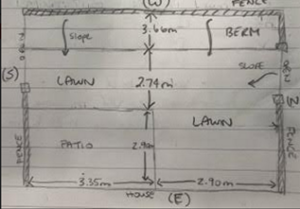
Patio: ~9.7m2 with several planters and a hummingbird feeder on the west edge.
Plants:
- Sweet William
- Tiger lily
- Chive
- Mint
- Geranium
- Delphinium
- Diasia
- Lantana
- Hellebore
- Cosmos
- Mallow
- Bee balm
- Blue Nigella
- Pink didiscus
- Raspberries
- Rosemary
- Basil
- Lupin
- Sedum
- Thyme
- Sage
- Marigold
- Snapdragon
- Tomatoes
- Siracha peppers
- Snow peas
- Salvia
- Hydrangea
Animals:
- Small black flies (on the wooden planter)
- Dark eyed junco (west fence)

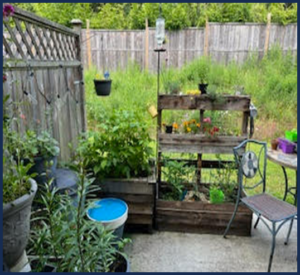
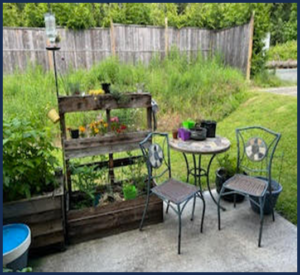
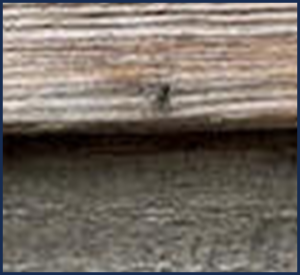
Lawn: ‘L’ shaped surrounding the patio that is ~26m2 with low growing plant species. There are two small seed feeders on the north fence. The lawn slopes down from the northwest corner.
Plants:
- Grasses
- Cat’s ear
- Dandelion
- Plantain
- Common daisy
- Lemon balm
- Mosses
- Dove’s foot geranium
- Yellow clover
- White clover
Animals:
- Hummingbird (hovering on the northeast section of the lawn)
- Dark eyed junco (north fence)
- House finch (north fence at the feeder and on the ground)
- Honeybee (along the border to the berm)
- Sparrow (north fence)
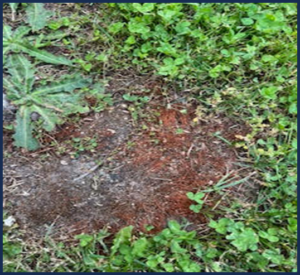
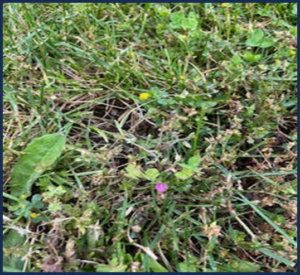
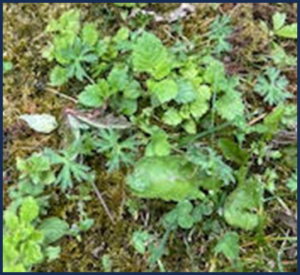
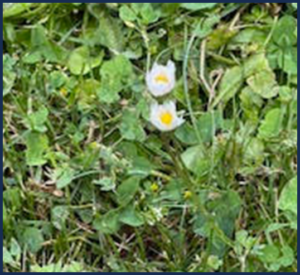
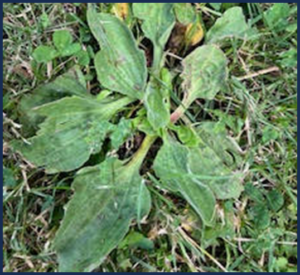
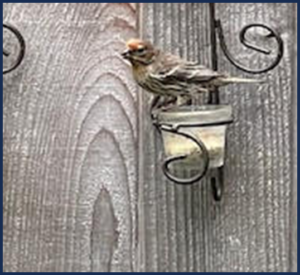
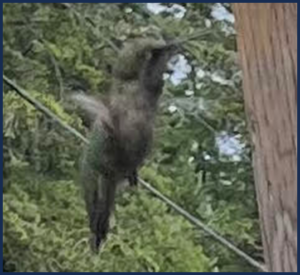
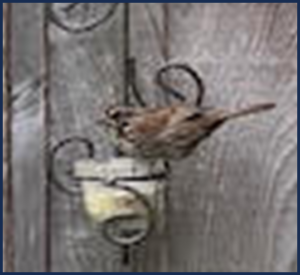
Berm: ~23m2. This area is raised at back of the property (west fence) and slopes down to the east as it approaches the border of the lawn.
Plants:
- Grasses
- Oxeye daisy
- Dandelion
- Thistle
- Buttercup
- Cat’s ear
- White Clover
- Mock vervain
- Tiny vetch
- Bitter dock


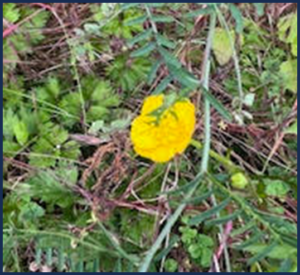
Questions:
- How does lawn maintenance impact soil and plant health?
- How do invasive plant species affect native plants in a suburban lawn environment?
- How can suburban lawns support native plant species?
Hi, welcome to the field part of the course! You have quite a diversity of plants for a backyard! Your questions have potential and as you work through the next few modules you will continue to think of how to turn one of these into a study.